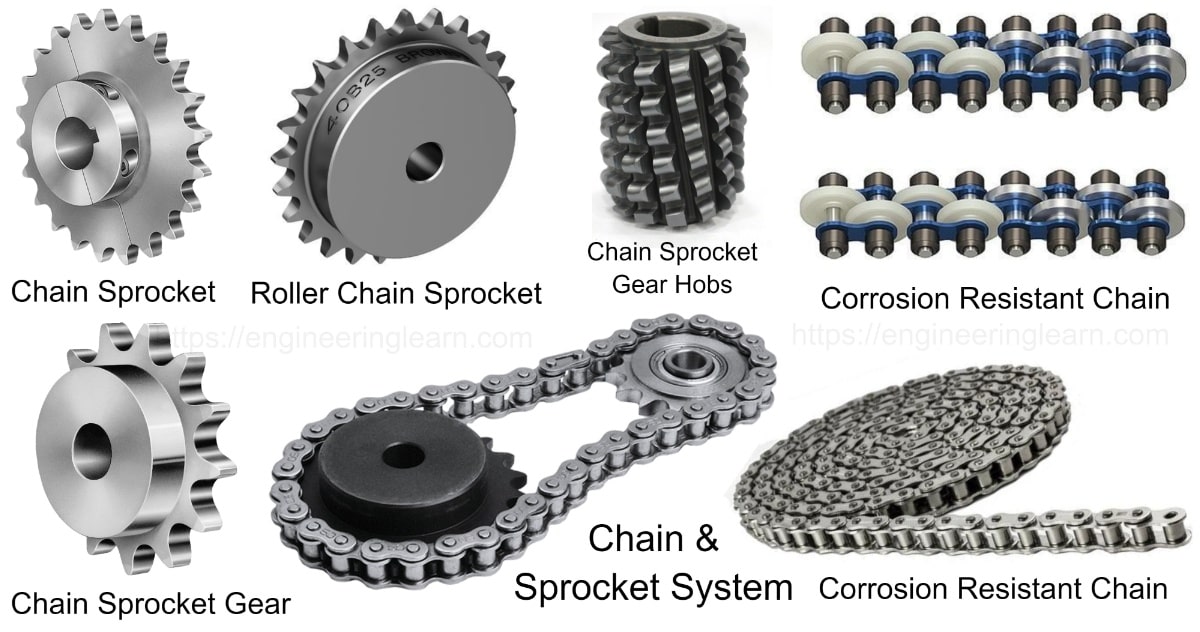The Ultimate Guide to Roller Chains: Everything You Need to Know
Roller chains are one of the most important components when it comes to power transmission. They are used in a variety of systems and applications, from industrial machinery and automotive engines to agricultural equipment. In this guide, we’ll discuss what roller chains are, how they work, their pros and cons, and some tips for choosing the right type for your needs.
A roller chain is a type of power transmission chain commonly used in industrial applications. They consist of a series of cylindrical rollers connected together by connecting rods that engage teeth on sprockets to transfer power from one shaft to the other. Popular for their strength, durability and efficiency, roller chains are used in industries such as automotive, agriculture and construction.
Types of roller chains
There are several different types of roller chains, each with its own characteristics and advantages. These include:
Standard Roller Chain – These chains are the most commonly used type of roller chain and are available in a variety of sizes and configurations.
Double Pitch Roller Chains – These chains have a longer pitch (the distance between the centers of adjacent rollers) than standard roller chains and are used in applications requiring slower speeds and lighter loads.
Heavy Duty Series Roller Chains – These chains are designed for heavy duty applications and are commonly used in industries such as mining, construction and forestry.
Hollow Pin Roller Chains – These chains have hollow pins that can be used to attach various accessories such as transfer plates or extension pins to the chain.
Side Bow Roller Chains – These chains are designed for applications that require the chain to run around curved surfaces.
How does roller chain work?
Roller chains utilize the friction created by the contact between their inner link plates and the outer surface of each tooth on the drive/driven sprockets and the tension of their springs (located inside), so they are efficient even under load Drive equipment, they will not slip due to centrifugal force during high-speed rotation. Hence, these types of chain systems provide highly durable operation as they require minimal maintenance compared to other types such as belt drives which require regular lubrication. Additionally, due to their structural design, roller chain systems also have a low noise level, which makes them ideal for applications where sound pollution is an issue.
The connecting rods are connected to each other by small cylindrical bushings, providing a smooth and flexible connection. The bushing also allows the chain to bend around curves without binding or kinking.
Roller chains are available in a variety of sizes and configurations for a variety of applications. They can be made from a variety of materials, including steel, stainless steel, and plastic, depending on application requirements.
Pros and Cons of Roller Chain Systems
Advantages: A major advantage is that roller chain systems tend to be more reliable than other types because no external lubricant is required – reducing cost over time while providing smoother overall operation; also, these types of transmissions can be compared to Belts run at higher speeds because they have lower friction losses, allowing for more efficient power transmission over distances of 1000 feet. Also, unlike belts which may need to be replaced after prolonged use (due to wear); roller chain designs will last longer and have fewer problems if properly maintained – the money initially invested in them will pay off value. Finally, the installation cost is usually lower because it is less labor intensive than installing a full belt system requiring a large number of pulleys etc…
Disadvantages: While these offer many benefits over traditional belt drive solutions; however, some disadvantages include increased initial cost, especially when purchasing a high-quality model; notably, the lack of Flexibility, coupled with potential problems due to fatigue failures resulting in shock loading during start-up operations. Finally, there is always a risk of misalignment between mating parts, causing off-line binding issues, leading to mechanical failure and eventually requiring repair/replacement…
Tips for Selecting the Correct Type of Roller Chain System
1) Determine your power requirements: The first step should be to determine how much power you need to transmit in a given application environment (whether indoor/outdoor etc)… certain factors must be considered here such as rated speed, rated torque , durability requirements, required length, etc… to ensure adequate performance time every time, regardless of weather conditions throughout the year… 2) Consider Environmental Factors: Next consider the environmental factors that will come into play after installation, Especially in an outdoor environment rain snow dust dirt etc… these can lead to faster damage if not protected accordingly so choosing the right material will ideally be able to withstand whatever harsh conditions are often encountered to the maximum Maximize your lifespan…3) Research the available options carefully: Last but not least, research the available options carefully to really ensure you get the best solution Budget constraints of course consider all the above points. Whether or not you want to go the cheaper route with the standard variety rather than the premium variety is entirely up to the specific circumstances the individual is facing, but in either case, don’t forget to check the manufacturer’s reviews, previous customers evaluate reliable before committing Suitability What an end user can expect before purchasing a specific model…Hope this ultimate guide to choosing the correct type of roller chain system has provided enough information to let you know you’re ready to start shopping around!
Post time: Feb-27-2023




